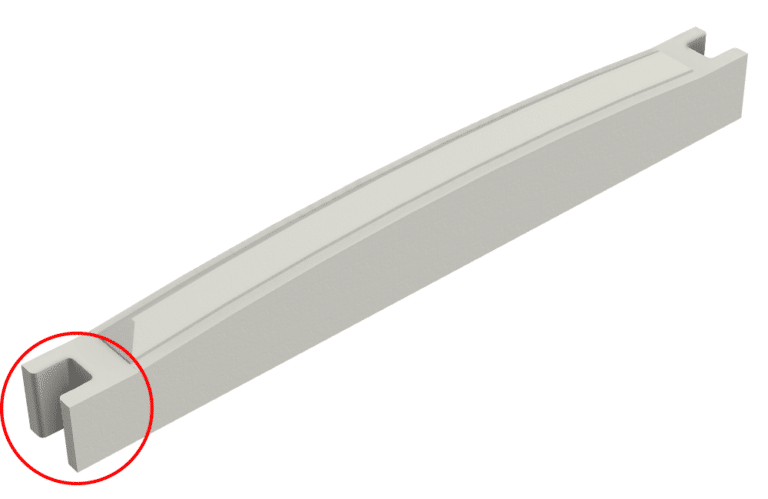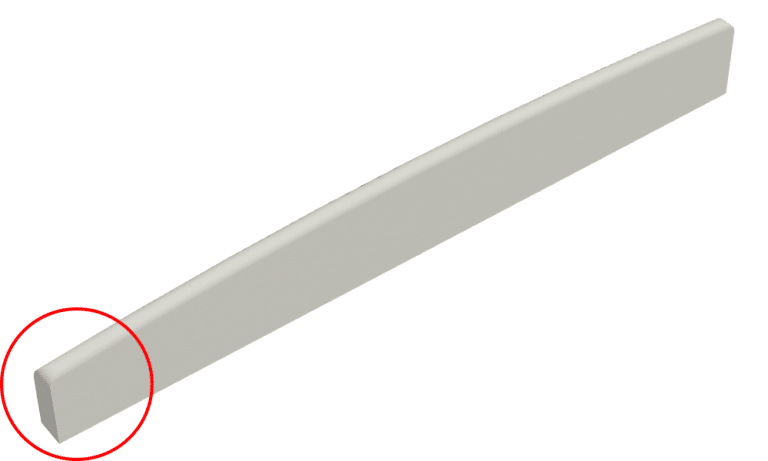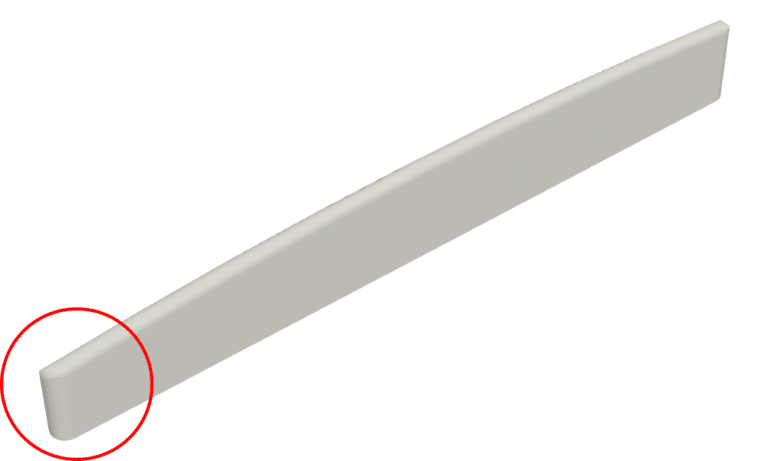Find the Right Height Adjustable Saddle for Your Acoustic Guitar
Although most commonly associated with Gibson saddles from the late 1950s to the 1970s, you’ll also find some Epiphone saddles, Alvarez saddles, Takamine saddles, and other brands that used height adjustable saddles. Finding the right type is difficult as there are different edge types, top radii, lengths, thicknesses, heights, compensation patterns, and materials. In this article we will list steps to find a suitable replacement.
Note: A height adjustable saddle is different from a floating bridge, which is found on an archtop guitar. Please see the following link for more information on floating bridges – Floating Bridge Information.
Also, a height adjustable saddle differs from an intonation adjustable bridge, similar to what’s found on electric guitars, but placed on an acoustic. The best-known of these was the Gibson Tune-o-Matic. Please see this video for more information. The height adjustable and Tune-O-Matic inserts have different specs and are not interchangeable. The Tune-O-Matic inserts are often about 3 to 4 mm thicker, made with a slightly overall longer overall length, and different post spacing. Also, Tune-O-Matic inserts will vary depending on year and manufacturer.
Step One: Determine Edge Type
You will see three different edge types – cutout, flat, or round – and obtaining the proper type is key for a good fit. Below is a description of each.
Cutout Edge
This edge type has a cutout designed to wrap partially around the adjustable screw. These saddles tend to be quite thick – around 7 mm – and appear in ceramic, wood, Tusq or bone. This edge type typically only appears on Gibson or Epiphone guitars. Please see our Guide to Gibson Height Adjustable Saddles for more information.


Flat Edge
If your guitar does not have the above cutout edge saddle, then it’s likely the flat edge type as this type is more common than the next type, round edge.


Round Edge
Similar to many drop-in guitar saddle edges, but less common on height adjustable saddles.


Step Two: Measure Fretboard and Saddle Radii
Matching your saddle and fretboard radii will produce better playability and reduced buzzing. Please note that guitar manufacturers sometimes use a saddle with a different radius from the fretboard’s. We advise that you measure your fretboard radius and then find a saddle replacement with a matching radius.
Note: The Tusq adjustable saddle with cutout edges has a 14 inch radius, although many Gibson models have a 12 inch fretboard radius.
Step Three: Measure Length, Thickness, Maximum Height, and Bass/Treble Edge Height Difference
Adjustable saddle lengths vary anywhere from around 60 to 80 mm. Thickness varies anywhere from 2.5 mm up to 7 mm for the Gibson style cutout edge saddles. Maximum height is often around 8 to 10 mm, but will vary for each guitar.
It might seem as though the bass to treble edge height difference would be zero for these saddles since the mechanism allows for bass/treble height adjustments, but you will often see bass to treble height differences, which will vary for each saddle.
Step Four: Measure Saddle Slot Length and Thickness
We also advise that you measure your saddle slot length and thickness as this might differ from your saddle’s specs. You may wish to get a slightly longer and/or thicker replacement saddle.
Step Five: Determine Compensation Pattern
While it might seem as though height adjustable saddles are simply non-compensated, differences do appear. Obtaining a replacement saddle with the same compensation type is necessary to maintain intonation. Below is a description of the most common types.
Non-Compensated
If your saddle is non-compensated, check to see whether it is center line or forward line – please see our Guide to Non-Compensated Saddles for more information. Note: Diagonal compensation saddles are uncommon for height adjustable saddles.
Center Line B Compensated
If your saddle has compensation for the B, check to see whether it is center line or forward line B compensated – please see our Guide to B Compensated Saddles for more information. Center line B compensated saddles are more common than forward line B compensated saddles are on height adjustable saddles.
B Compensated Plus Additional Compensation
If your height adjustable saddle is B compensated plus has additional compensation, it’s unlikely the original saddle.
If your goal is to recreate the look of your guitar, then we advise that you try to determine the original saddle type used.
If your goal is to improve intonation, you might want to consider other compensation patterns, but please note several things. First, increased compensation does not necessarily equal improved intonation. Many vintage guitars had sharper bridge saddle slot angles rather than compensated saddles, and so using a compensated saddle could have a negative effect on your intonation, especially if your bridge string spacing does not match the saddle compensation pattern.
Second, many height adjustable saddles are around 2.8 mm thickness. However, many of the aftermarket saddles available today are built for drop-in installation, not a height adjustable slot, and are often either 2.5, 3.0, or 3.2 mm thickness. Adjusting saddle thickness by hand is difficult so be sure to measure your saddle and saddle slot thickness, then compare to any saddle you plan to purchase.
Third, some height adjustable saddle slots are around 65 mm long, but many of the aftermarket saddles available today are built for drop-in installation, not a height adjustable slot, and are often around 70 to 75 mm long. Adjusting length on a compensated saddle will require that you do so without disrupting the compensation pattern versus the string spacing.
Please see our Acoustic Guitar Saddle Compensation Patterns article for a discussion of common types.
Step Six: Determine Material
Adjustable height saddles have appeared in a variety of different materials over the years, including ceramic, wood, bone, plastic, and Tusq. Please see our article on guitar saddle materials for more information. Please see this video demonstration of some of these different materials.
A Note on String Notches
Your saddle may have notches that each string fits in. These either happened because the strings slowly dug the notches, or someone incorrectly cut notches to lower action. Acoustic guitar saddles should not have notches, which will pinch the strings at the side and result in a subtly muted tone. String pressure is sufficient to keep strings in place at the saddle.
What Adjustable Saddle Does Your Guitar Need?
Still wondering which adjustable saddle your guitar needs? Please send us all of the following information.
- Saddle Edge Type
- Fretboard Radius
- Current Saddle Length, Maximum Height, Thickness – Must be measured with a caliper
- Bass to Treble Height Difference
- Guitar Saddle Slot Length, Thickness (if different from saddle specs) – Must be measured with a caliper
- String spacing at the bridge
- Current Saddle Compensation Pattern (please send a picture if you are not sure what type you have).
